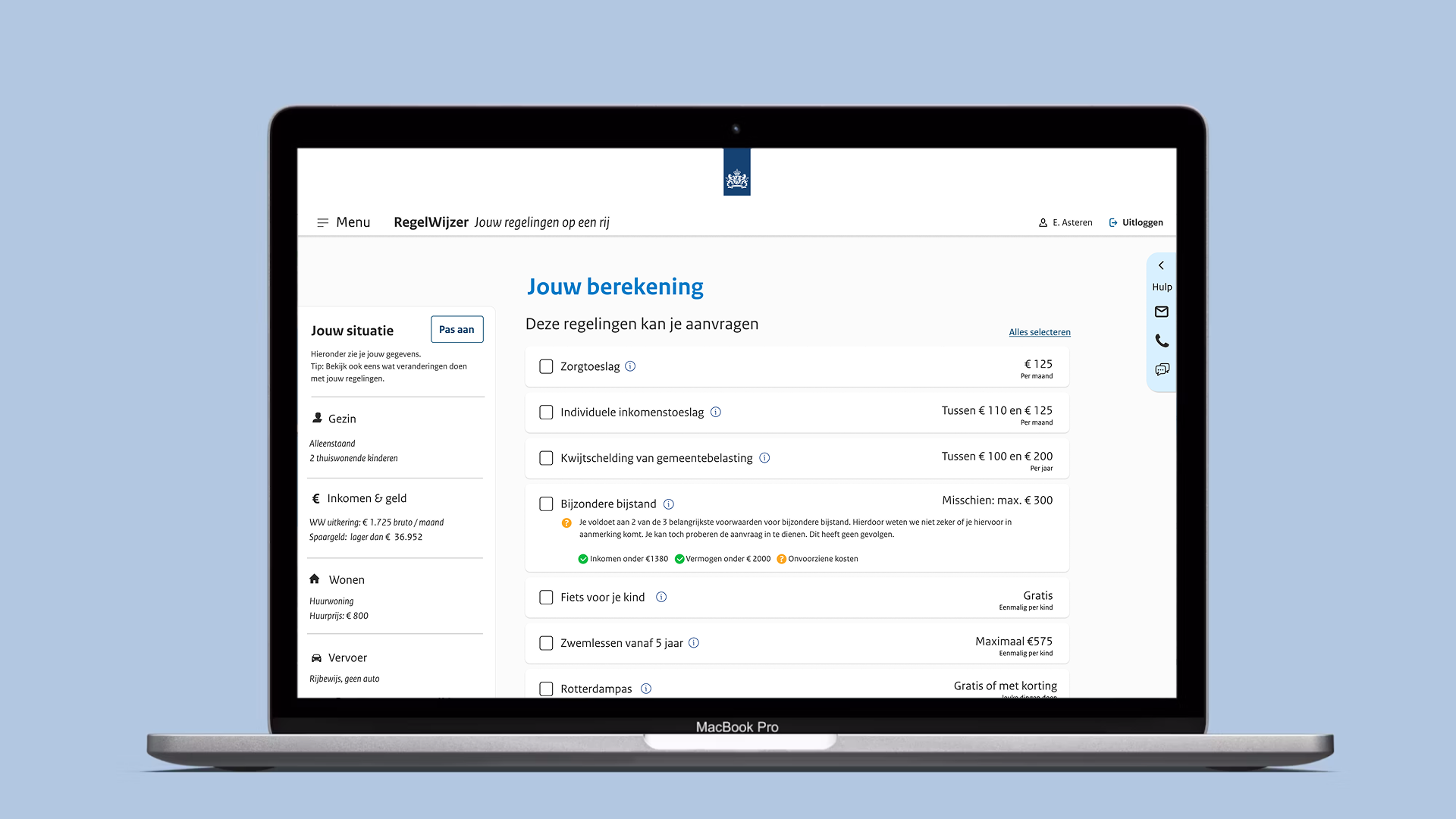The current system of income support is a jungle where even experts get lost. For people already struggling financially, this is especially problematic. They are entitled to support but can't see the forest for the trees. Each regulation has its own conditions, procedures, and counters. The result? Regulations remain unused while people desperately need them. We tackled this challenge with the concept design for a Personal Digital Regulation Overview (PDR).

From financial maze to clear overview.
More than a million Dutch people struggle to make ends meet. Many of them leave money on the table because they don't know what they are entitled to. Or because applying for benefits seems too difficult or intimidating. For the Ministry of the Interior, we designed and prototyped a digital tool that seamlessly guides people through the forest of regulations and organizations. A design that directly contributes to financial security.
The challenge
The design
Goodbye to endless forms and complicated calculations. The PDR puts the user at the centre with personalized advice about available regulations. By smartly using DigiD data, much is automatically filled in. At a glance, you can see what you're entitled to and are guided step-by-step through the application process. Clear, transparent, and without unnecessary barriers.
The approach
Extensive research on the target group and non-use of regulations already existed. Through our own and AI analysis of existing research, close involvement with domain experts, and user research with prototypes, we discovered what people truly need. In iterative workshops with the team, we refined the concept into a solution that works for users: RegelWijzer (RegulationGuide). Not assumptions, but concrete insights based on conversations with citizens.

The result: RegelWijzer
The tests yielded surprising insights. Where we expected some hesitation, the opposite proved true: users immediately trusted the advice. The combination of the government as the sender and logging in with DigiD made people feel that "it must be correct". This trust, along with automatically loading data, removed much uncertainty. It became visible how questions about income and finances can cause stress. The less people have to fill in themselves, the greater the chance they will complete the application. These valuable insights make the concept ready for the next phase: decision-making about the PDR's next steps and follow-up research.
Design impact
This project proves that a design approach can make a difference in major societal challenges. By making complex systems human and accessible, we help people concretely with their financial security. As designers for life, we create not just beautiful interfaces, but contribute to a fairer society where everyone receives what they are entitled to.
Curious about how you can make an impact with design thinking in your organization?

